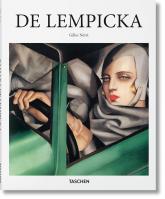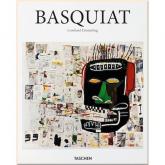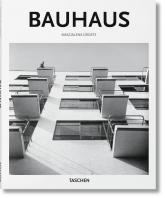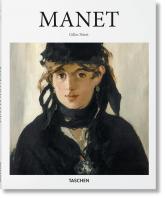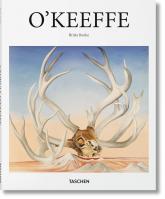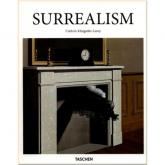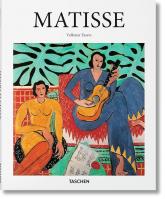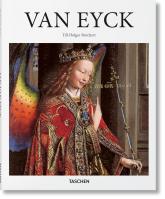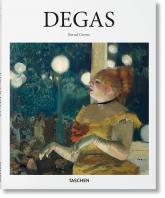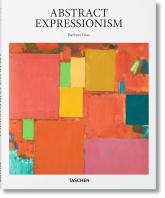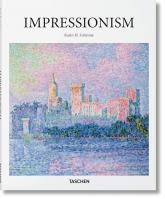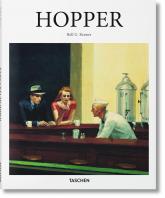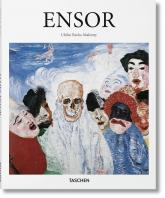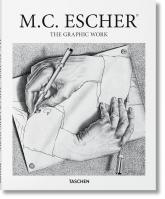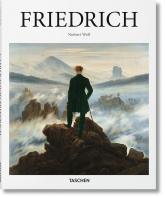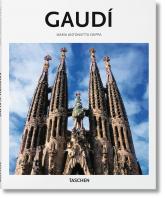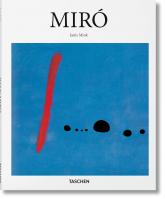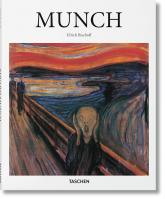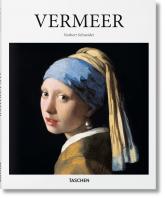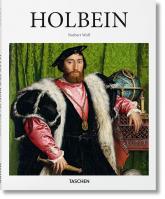Sb from 10:00 to 18:00
Foreign Literature
Found 521 goods
Tamara de Lempicka (1898–1980) lived art in the fast lane. With an appetite for glamour and fame as much as Left Bank bohemianism, she fled her native Russia after the Bolshevik revolution and set about taking Paris by storm. Her prolific, monumental oeuvre remains one of the most vivid visua...
An icon of 1980s New York, Jean-Michel Basquiat (1960–1988) first made his name under the graffiti tag “SAMO,” before establishing his studio practice and catapulting to fast fame at the age of 20. Although his career lasted barely a decade, he remains a cult figure of artistic social comment...
In a fleeting fourteen year period, sandwiched between two world wars, Germany’s Bauhaus school of art and design changed the face of modernity. With utopian ideals for the future, the school developed a pioneering fusion of fine art, craftsmanship, and technology to be applied across paintin...
Lampooned during his lifetime for his style as much as his subject matter, French painter Edouard Manet (1832–1883) is now considered a crucial figure in the history of art, bridging the transition from Realism to Impressionism. Manet’s work combined a painterly technique with strikingly mod...
Georgia O’Keeffe (1887–1986) was a major figure in modern American art for some seven decades. Importantly, her fame was not associated with shifting art styles and trends, but rather with her own unique vision, based on finding essential and abstract forms in nature. O’Keeffe’s primary subj...
With Salvador Dali as its figurehead, the great ship of Surrealism traversed the turbulent seas of the early 20th century with sails billowing with dreams and desires. Inspired by the psychoanalytical practice of Sigmund Freud, the Surrealists championed the unconscious as the domain of truth...
The work of Henri Matisse (1869–1954) reflects an ongoing belief in the power of brilliant colors and simple forms. Though famed in particular for his paintings, Matisse also worked with drawing, sculpture, lithography, stained glass, and collage, developing his unique cut-out medium when old...
Often imitated but never equaled, Jan van Eyck (c. 1390-1441) left an indelible impression on Renaissance art and paved the way for future realist painters. With its unprecedented precision and masterful use of color, Arnolfini Double Portrait, depicting the wedding of a young couple, is test...
Most commonly associated with the birth of the Impressionist movement in mid-19th-century Paris, Edgar Degas (1834–1917) in fact defied easy categorization and instead developed a unique style, strongly influenced by Old Masters, the body in motion, and everyday urban life. The elder scion o...
Hailed as the first American-born art movement to have a worldwide influence, Abstract Expressionism denotes the non-representational use of paint as a means of personal expression. It emerged in America in the 1940s, with lead protagonists including Jackson Pollock, Philip Guston, Robert Mot...
Discover how scenes of daily life and delicate dabs of color shocked the art world establishment. In this TASCHEN Basic Art introduction to Impressionism, we explore the artists, subjects, and techniques that first brought the easel out of the studio and shifted artistic attention from histo...
Edward Hopper (1882–1967) is something of an American success story, if only his success had come swifter. At the age of 40, he was a failing artist who struggled to sell a single painting. As he approached 80, Time magazine featured him on its cover. Today, half a century after his death, Ho...
An Expressionist before the term was coined, James Ensor (1860–1949) was the classic insider-outsider enigma. He knew all the right art-world figures but loathed most of them. His style lurched from the Gothic fantastical to the Christian visionary. He was a cosmopolitan trailblazer of modern...
From impossible staircases to tesselated birds, Dutch artist M.C. Escher (1898–1972) crafted a unique graphic language of patterns, puzzles, and mathematics. Dense, complex, and structured by intricate principles, his work is at the same time decorative and playful, toying constantly with opt...
The beauty of nature and man’s loneliness are dominant themes in the work of Caspar David Friedrich (1774-1840). The artist often places a small human figure in a broad landscape, as in his famous paintings Monk by the Sea and The Wanderer above the Sea of Fog. For a long time the importance ...
From the towering Sagrada Familia to the shimmering, textured facade of Casa Batllo and the enchanting landscape of Park Guell, it’s easy to see why Antoni Gaudi (1852–1926) gained the epithet “God’s architect.” With fluid forms and mathematical precision, his work extols the wonder of natura...
With a career spanning seven decades, Catalan-born Joan Miro (1893–1983) was a polymath giant of modern art, producing masterworks across painting, sculpture, art books, tapestry, and ceramics, and embracing ideologies as varied as Fauvism, Surrealism, Dada, Magic Realism, Cubism, and abstrac...
A hairless, ghostly figure on a bridge. The sky orange-red above him. His hands raised to his ears, his mouth wide in a haunting wail. In painting The Scream, Edvard Munch (1863–1944) created Mona Lisa for our times. The shriek of his iconic figure reverberates around the world, its echo reso...
Though numbering just 35 known works, the ?uvre of Johannes Vermeer (1632–1675) is hailed as one of the most important and inspiring portfolios in art history. His paintings have prompted a New York Times best seller, a film starring Scarlett Johansson, and record visitor numbers at art insti...
Religion, Renaissance, and Reformation-these three ideologies shaped the world of 16th-century portraitist Hans Holbein the Younger (1497/98–1543), a pivotal figure of the Northern Renaissance, whose skills took him to Switzerland, Belgium, Italy, and England, and garnered patrons and subject...









